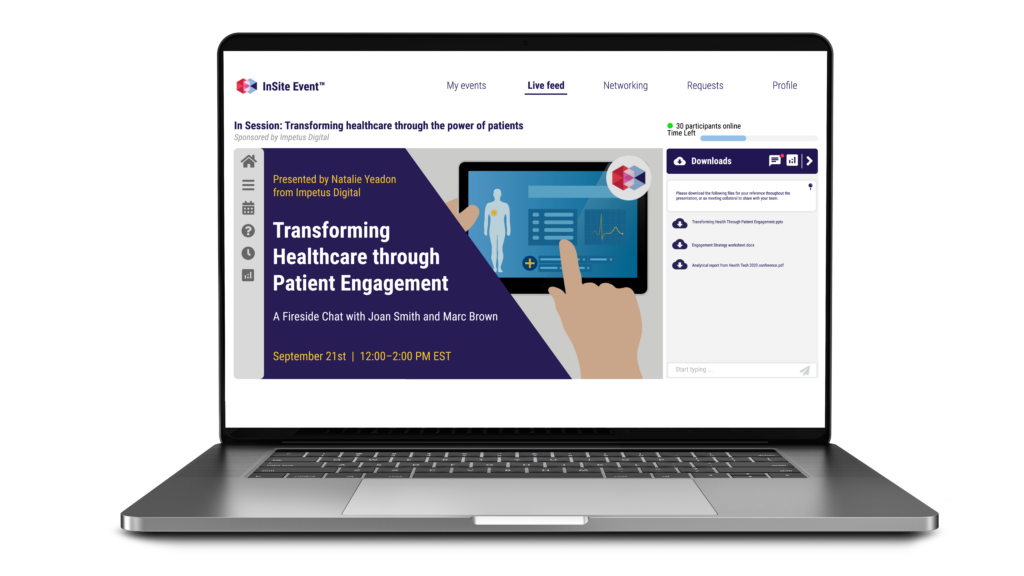A version of this article was previously published on Pharmaphorum.
I think it’s fair to say that 2020 will not be particularly missed by anyone. Many started the year with big plans, whether for overseas trips, weddings, or industry events, and then the unthinkable happened. While the world first heard of the novel coronavirus in late 2019, it was not until March 11 that it was declared a global pandemic and it finally sank in just how serious of a threat it was. We are literally living through a major historic event.
Over the months that followed, COVID-19 has impacted every aspect of our lives, from the way we shop for groceries to the way we conduct work and interact with healthcare providers and our families.
Major global events
COVID-19 has amplified many of the issues that society was already facing. Although the pandemic has largely taken the media’s focus away from the climate crisis, it has given us a preview of what’s to come if we do not stop exploiting the planet and our wildlife. Indeed, 2020 brought new record forest fires and extreme weather events.
In addition, 2020 was the year where social justice (not least in the form of Black Lives Matter protests) was brought into focus. Racial discrimination and bias were also uncovered in healthcare, with stark differences in COVID-19 rates and mortality between different ethnicities in many countries.
COVID-19 has widened the already large class divides seen between white-collar and service workers, with the former typically having the option of working from home and taking the recommended social distancing precautions. Conversely, the latter group is largely being forced to carry on with their work with little protection and low compensation, if they even have a job to go to after many smaller businesses closed their doors.
Public health became politicized
Somehow, in 2020, wearing a mask to prevent the spread of a highly contagious disease became a controversial and political issue. People were asked to stay home, watch Netflix, and bake sourdough bread to protect those who are vulnerable, yet photos of packed bars and sports stadiums soon emerged and anti-masking protests were held across the world.
This year, epidemiologists, researchers, and clinicians have become household names, with people like Dr. Anthony Fauci and Sweden’s Anders Tegnell drawing their fair shares of both praise and criticism domestically and internationally. Countries’ strategies to contain the spread of the virus have been debated and criticized, and it will likely be years before we’ll be able to say which approaches were “right” and “wrong.”
Mental health focus
As I explored during the first wave of the pandemic, the secondary effects on mental health are vast. We are already seeing increased rates of depression and anxiety as a result of the pandemic and lockdowns, and there are no signs of this slowing down. Women are especially impacted, disproportionately having to take on childcare or home-schooling compared to their male counterparts. On the upside, the pandemic has brought enhanced focus to mental health issues and on innovative approaches on how to best address these. If we can keep the momentum going and retain this focus post-COVID, perhaps the stigma around mental health can be lifted and better treatment strategies can emerge.
The researchers of the world came together to find a cure
Another positive note is that the pandemic has accelerated laboratory and clinical trial collaboration far beyond what has ever been seen before. From the onset of the pandemic, scientists have been openly sharing their data with investigators from other centers or countries. Without this knowledge-sharing and open collaboration, we might not have been looking at multiple promising vaccine candidates in 2021. It has also shown that the time it takes to get a drug to market can be substantially reduced when there is enough funding and political will. How this will affect clinical trials and regulatory approvals in the future remains to be seen, but there is reason to be optimistic.
Healthcare went virtual
Before 2020, telehealth appointments were few and far between, with many clinics not set up for these services. Since then, the growth of telemedicine has been exponential. Another aspect of healthcare that has had to adapt is the way we monitor chronic conditions. Older patients or those with comorbidities are at higher risk of severe COVID-19, so frequent clinic visits for routine blood pressure measurements are not always feasible. As a result, we have seen a dramatic increase in the interest and uptake of remote monitoring devices such as wearables and mobile health apps. I predict that this is just the beginning of healthcare’s virtualization and am excited to see what the new year has in store.
Remote work is the future
Another major change in 2020 is of course the sudden move to remote work. This is something that my company has been doing for over a decade, but for many others, it was a 180-degree shift from business as usual. Interestingly, in a Canadian survey from October, the majority of respondents (55%) expected at least some of the workforce to remain remote in a substantial way after the pandemic is over, while only 17% expected all staff to be onsite five days a week. Further, major companies like Twitter have announced that employees will be able to work from home permanently, signaling a clear change in the way that we do work. While not without challenges, I see remote work becoming a mainstay due to its greater flexibility and convenience for workers.
Virtual events are rapidly improving
Finally, the ways that pharmaceutical and scientific communities attend meetings and events completely changed in 2020. Virtual meetings such as advisory boards and steering committees were already popular before this year, but were often accompanied by in-person meetings. We have now seen without a doubt that it is possible to meet the same objectives virtually, often more effectively and at a lower cost.

The biggest change, however, is the way we now attend larger events such as conferences, congresses, and medical education events. There is no shortage of online conference solutions available, but there is still much to improve on. For example, some aspects of in-person events are not always there or are poor substitutes for the real thing. Ideally, virtual event platforms should be comprehensive, so that everything you need is in the same place. The layout, branding, and inclusions should be completely customizable to your needs, and it should come with all aspects of in-person events such as networking, breakout workshops, exhibitor booths, and poster sessions. The good news is that these types of platforms are getting better by the day, and so are the virtual events that they host.
What have we learned from the last year?
The past year has shown that, firstly, we live in a highly polarized world where science and public health are up for debate. Secondly, crisis leads to innovation and digital health technologies represent the future of medicine. Lastly, remote work and virtual meetings are here to stay.
Let’s hope that we are able to apply these lessons to make the post-COVID “new normal” world a better, safer, and kinder place.




